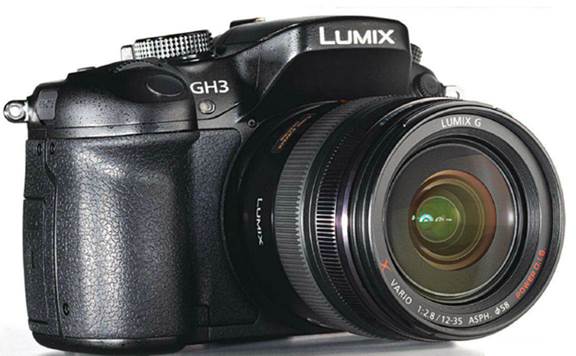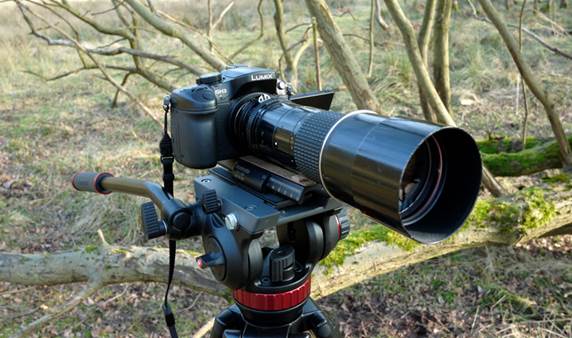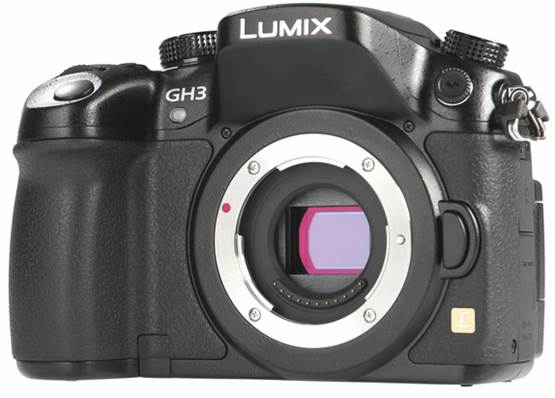Authoritative tests, reviews, and
buying advice
Panasonic’s “small” camera does big things
Micro four thirds cameras, along with other
mirror less bodies, have always been billed as smaller than DSLRs. While they
definitely, are Panasonic’s Lumix GH- and G-series bodies take their design
cues from the reflex cameras that came before them. The latest flagship model
from Panasonic, the Lumix GH3 ($1,298, street body only), is the largest
interchangeable-lens compact yet made, but also marks a new level of camera for
this format.

Panasonic
Lumix GH3
Like Olympus’s OM-D E-M5, the GH3 is
weather-sealed, and its rugged magnesium-alloy body feels strong enough to
stand up to heavy use. Plus, Panasonic built in support for three different
ways of recording 1920x1080p video at much higher bit rates than its
predecessor – likely in response to the large number of users who opted for a
third-party firmware boost to the GH2’s video recording. Add to that a
6-frames-per-second burst speed, an articulated OLED touch screen, and a
generous complement of dedicated control buttons, including five assignable
function buttons.
Interested yet? We thought you might be, so
let’s see how it fared in our lab and field tests.
In the Test Lab
With impressive resolving power for a 16MP
sensor, the GH3 earned an overall image quality rating of Excellent from is
lowest sensitivity of ISO 125 through ISO 400. Not a huge surprise, given that
this is Panasonic’s new top camera, and the level of shooter the company is
targeting with it.

With
impressive resolving power for a 16MP sensor, the GH3 earned an overall image
quality rating of Excellent from is lowest sensitivity of ISO 125 through ISO
400
Color accuracy also took top honors, an
Excellent rating, with an average Delta E of 6.5. While this is slightly better
than the Olympus OM-D’s score, you’d be hard pressed to discern a difference at
this level of accuracy.
In our resolution test, the GH3 delivered
2530 lines per picture height for an Excellent rating. (We used Panasonic’s
25mm f/1.4 DG Summilux Leica normal lens for all lab testing). As expected, the
version of Silkypix software that ships with the GH3 doesn’t vary the noise
reduction applied as ISO setting is increased, and very little noise reduction
is applied at default. As a result, the noise numbers in our official results
are high, while resolution isn’t sacrificed to the noise-reduction gods. At
default settings, the GH3 held onto lots of resolving power as sensitivity
increased. At ISO 800, it was still at 2525 lines; by ISO 6400, it fell to
2380. Even at its maximum of ISO 25,600, it served up 2200 lines.
Switching to JPEG capture, the GH3
delivered 2410 lines at ISO 125, which would give it an Extremely High rating
in this test. At ISO 800, the GH3’s JPEG achieved 2340 lines, while at ISO 6400
and 25,600, JPEGs delivered 2250 and 1970 lines, respectively.
Noise remains the bane of Micro Four Thirds
cameras, and the GH3 is no exception. Though images were wonderfully clean at ISO
125 and ISO 200, where TIFFs converted from RAW files had Extremely Low noise,
as the sensitivity raised the noise followed closely. For TIFFs, ISO 400 was
the last level to see a Low or better rating in our test, and noise reached
Unacceptable levels by ISO 1600.
Despite the fact the many new cameras
omit one; Panasonic had the good sense to include a PC sync terminal to the GH3
for simplified studio shooting.
Sure, you can add more noise reduction, but
it’s telling that JPEGs output by the camera eked out only one more stop of Low
or better noise and still reached an Unacceptable ratings at ISO 1600. All
told, we were impressed with the GH3’s ability to control noise without huge
sacrifices in resolution in camera-generated JPEG images.

Despite
the fact the many new cameras omit one; Panasonic had the good sense to include
a PC sync terminal to the GH3 for simplified studio shooting.